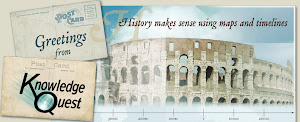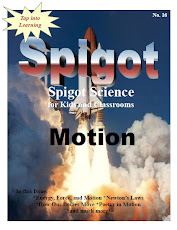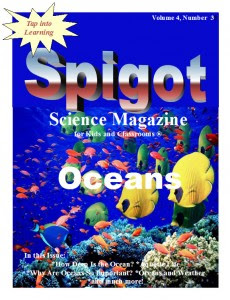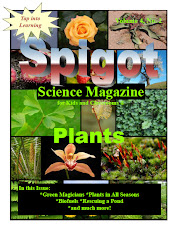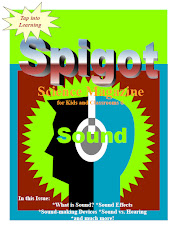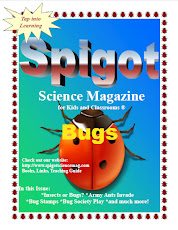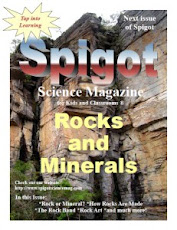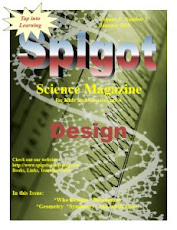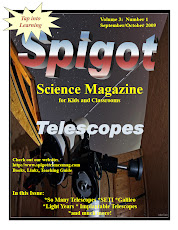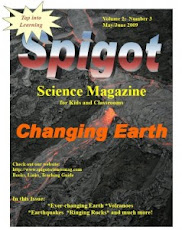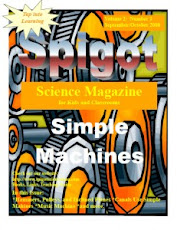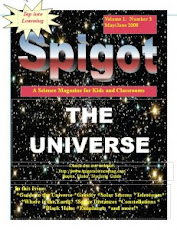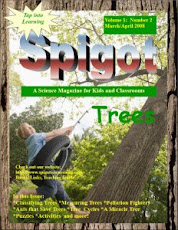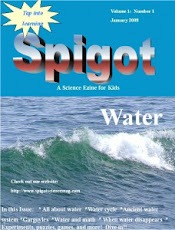Tissue Engineering: Fixing the Human Body
There are some other uses of tissue engineering. Some scientists are proposing that we grow animal muscle in labs so that it can be used for meat in areas without enough food. What do you think about that idea?
Read more at; http://www.spigotscience.com
This is the start of a choral reading. You can read it in many different ways and add many new verses. One way to read it is to have one group read the refrain, the repeated boldfaced lines. Other groups or individuals could then say the verses.
Refrain
Millions and billions and trillions of cells,
So small we cannot see them
Made of atoms and molecules
The building blocks of life
READ MORE...
by Allsion Greco
The microscope is an instrument we use to look at objects such as cells that are too small to be seen with the human eye. Three people from the Netherlands are often given credit for inventing the microscope in 1590—Hans Lippershey, Sacharias Jansen, and Hans Jenssen. They were all eyeglass makers who experimented with lenses to see small objects.
There was a great interest in magnifying things in the Renaissance (1300s-1600s). During that time, scientists studied the things all around them using lenses and created inventions that we still use today like the microscope. Anton van Leeuwenhoek is often said to be the inventor of the microscope, but he just improved it. He was among the first to use microscopes to discover new things such as blood cells and protozoa (one-celled animals)...
READ MORE
Summer is a great time to relax and unwind. For many kids it can also be a time of alternating between high activity and extreme boredom. TV, social media, and video games fill some of the void, but many upper elementary and middle school kids are itching to do something more.
Many schools offer lists of ideas for reading and writing activities to ward off the summer doldrums and keep learning alive.
We, at Spigot Science, would be remiss if we didn’t suggest some ideas that might help kids stay connected with science.
1. Go to the local library and participate in their summer reading program. Some libraries offer science programs, too. You could download Spigot Science book reviews from the Library
Connection to focus on specific science topics. Keep a record of what you read and what you learn.
2. Prepare a science fair project just for fun. The Spigot Science Library Connection suggests some good books for science fair ideas. The experiments done in the summer just may provide a head start on next year’s science fair.
3. Go outside and take a lot of digital pictures. Look at them and see if you see a theme. Go back outdoors and take pictures related to the theme. Put these pictures together in your favorite multimedia program and share your digital story with others.
4. Take a field trip to a science museum or zoo. There may even be a workshop for you to participate in.
5. Record the things that interest you with a digital camera. Summarize what you learn in a slide show, video, or poster. If you have the space, plant a small garden or create a vegetable garden in pots. Tend the garden and watch it grow. Observe the stages plants grow through. Enjoy the harvest.
Check out Spigot Science at; http://www.spigotscience.com
For your brain to function, nerve cells called neu-rons, must "talk" to each other. But they talk with chemi-cals, not words. Let’s ask Nate Neuron how neurons "talk."
Nate Neuron"Hi, I’m Nate Neuron. I have a big belly called a cell body.It makes chemicals, generates energy, stores my genes (which carry inherited information), and, in gen-eral, keeps me alive. Attached all around my cell body are branches, like tiny trees, called dendrites. On one side of the cell body is a special long extension called an axon. We’ll meet them both, but let’s meet Denny Den-drite first." READ MORE...
The deepest parts of our oceans are among the least explored and most unknown places on Planet Earth. Through the use of submarines and remotely operated devices, scientists are discovering what life exists in the deep ocean.
In the latest issue of Science in the News, students learn about what movie director James Cameron (Avatar, Titanic, and more) saw on his recent dive into the Challenger Deep near Guam.
And, as if this were not deep enough, we also share what scientists are finding by using remote probes that actually snoop BENEATH the ocean's floor!
As many have come to expect with our monthly issue of SITN, discussion questions, vocabulary, and activities are included with the short text to help students not only understand the topic, but to also infer new knowledge. We believe that as students improve their grasp of science vocabulary, their interest in science grows dramatically.
As a premium member, Science in the News is included for downloading, as is all of our wide selection of Spigot content.
Come visit us, turn on the Spigot, and Tap into Learning!
| Carbohydrates |
| Carbohydrates are molecules made of carbon, hydrogen, and oxygen. Carbohydrates, also known as sugars, provide energy for a cell inside its mitochondria. |
| Proteins |
| Proteins are large molecules known as ribosomes in the cell’s organelles. Proteins are used by cells for structural support, transporting other products, and sending signals. |
Cells are the building blocks of all plants and animals. Plants are made of many different types of cells. Each cell has a specific purpose so that the plant can function properly. Just as with animals, all of the plant cells work together as a whole to make the plant come to life.
A plant has parts such as flowers, stems, leaves, and roots. Different cells make up each of these plant parts. Each cell plays a vital role to sustain the life cycle of the plant. READ MORE...
Activities To Do From This Article
1. Pick one type of plant cell.
2. Find two websites, one book, and one magazine article about the plant cell.
3. Make a list of what the plant cell does.
4. Draw a diagram or picture to illustrate the function of the chosen plant cell.
5. Share and explain your diagram to someone else








